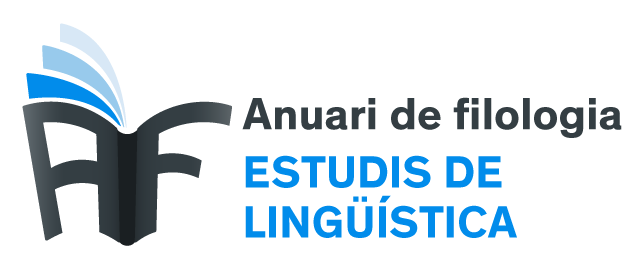General Extenders in Spanish Interactions: Frequent Forms, Pragmatic Functions y todo eso
DOI:
https://doi.org/10.1344/AFEL2022.12.8Keywords:
general extenders, Spanish, interactive functions, metadiscursive functions, spoken corpora, reported speech, vaguenessAbstract
The majority of Spanish discourse analysts do not consider general extenders as a type of discourse marker (a position this paper adheres to) and as a result, not many studies have been devoted to determining their characteristics. This paper presents a description of the principal forms, semantic nature and discourse functions performed by general extenders in European Spanish. The analysis is based on a large amount of data (3 700 000 tokens from two spoken corpora, Corpes XXI and Val.Es.Co. Corpus) and considers different text types and discourse genres. The research focuses on two types of pragmatic functions attributed to general extenders that are the result of semantic bleaching, i.e., they have lost their original referential meaning in order to highlight common ground in interactions: interactive functions (politeness, hedging, intensification) and metadiscourse functions (delimitation, marking transitional relevance places and forward planning). Spanish data support the hypothesis that strong cross-linguistic similarities exist at both a formal and functional level. Further lines of research in the field of Spanish linguistics are highlighted in the final considerations.Downloads
Download data is not yet available.
Downloads
Published
2022-12-26
How to Cite
Borreguero Zuloaga, M. (2022). General Extenders in Spanish Interactions: Frequent Forms, Pragmatic Functions y todo eso. Anuari De Filologia. Estudis De Lingüística, 12, 155–187. https://doi.org/10.1344/AFEL2022.12.8
Issue
Section
Investigar la llengua parlada, avui. Monogràfic coord. per Araceli López Serena
License
The authors who publish in this journal agree to the following terms:
- Authors retain copyright and grant the journal the right of first publication.
- Texts will be published under a Creative Commons: Reconeixement 4.0 Internacional license.






